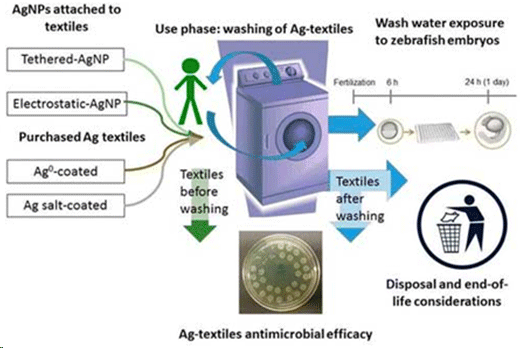|
NOVIDADES
Anti-odor athletic clothes containing silver nanoparticles have gained a foothold among exercise buffs, but questions have arisen over how safe and effective they are. Now scientists report in ACS journal Environmental Science & Technology ("Potential Environmental Impacts and Antimicrobial Efficacy of Silver- and Nanosilver-Containing Textiles") that silver nanoparticles and coatings do wash off of commercially available garments in the laundry but at negligible levels. They also found that even low concentrations of silver on clothing kept microbes at bay.  Thanks to their antimicrobial properties, silver nanoparticles are found in an increasing array of products such as food packaging, bandages and textiles. At the same time, scientists have been studying the possible effects silver nanoparticles might have on the environment and human health. Studies have shown that the particles can be toxic, but their safety is dependent on a number of factors such as size and dose. Few studies, however, have examined both their effectiveness in products and their potential for harm. Paul K. Westerhoff and colleagues wanted to see how the design of antimicrobial clothes affects how well they stand up to washing and their potential to leach silver into the environment. The researchers tested commercial athletic shirts in which the silver nanoparticles were incorporated in one of four different ways. Washing the shirts released a range of silver concentrations, depending on how the nanoparticles were attached. But overall, the resulting toxicity of the wastewater due to its silver content was negligible to zebrafish embryos — a model animal used in toxicity studies. And after washing, the shirts still retained their antimicrobial effect even if their remaining metal concentration was low. The researchers also say, however, that the remaining silver will leach out over time when the clothes are discarded in landfills. They recommend keeping the initial metal concentration in these products low to help reduce their environmental impact while still maintaining their ability to fight off microbes. American Chemical Society, Posted April 13, 2016. |
|||||||||||||||||||||||||